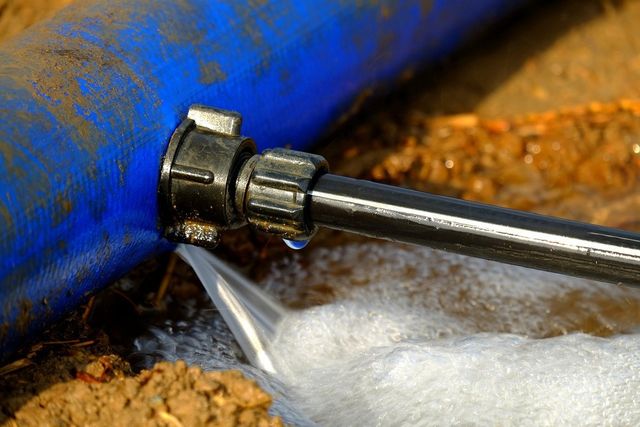Spotting Hidden Water Line Leaks: Six Practical Detection Methods
Spotting Hidden Water Line Leaks: Six Practical Detection Methods
Blog Article
This great article down below involving Detecting hidden plumbing leaks is totally remarkable. You should investigate it.

Early detection of leaking water lines can mitigate a potential calamity. Some little water leakages may not be visible.
1. Check Out the Water Meter
Inspecting it is a surefire means that helps you find leaks. If it relocates, that shows a fast-moving leakage. This implies you might have a slow leak that can also be below ground.
2. Check Water Consumption
If you identify sudden modifications, despite your intake being the same, it suggests that you have leaks in your plumbing system. An abrupt spike in your bill suggests a fast-moving leakage.
On the other hand, a steady boost on a monthly basis, despite the very same practices, shows you have a slow-moving leak that's also gradually rising. Call a plumber to thoroughly check your residential property, especially if you really feel a warm area on your flooring with piping beneath.
3. Do a Food Coloring Test
When it comes to water consumption, 30% comes from commodes. If the color in some way infiltrates your bowl during that time without flushing, there's a leakage in between the container and also dish.
4. Asses Outside Lines
Do not neglect to inspect your exterior water lines too. Examination faucets by attaching a yard hose. Ought to water permeate out of the connection, you have a loose rubber gasket. Change this and also make sure all connections are limited. It will aid get it professionally took a look at and also maintained yearly if you have actually obtained a lawn sprinkler system. One small leak can waste lots of water as well as surge your water bill.
5. Inspect as well as Analyze the Circumstance
Home owners ought to make it a routine to check under the sink counters as well as also inside closets for any kind of bad odor or mold and mildew growth. These 2 red flags suggest a leak so timely focus is called for. Doing regular inspections, even bi-annually, can save you from a significant problem.
Extra importantly, if you understand your residence is already old, keep a watchful eye on your heating systems, hoses, pipes etc. Look for discolorations and deteriorating as a lot of devices and also pipelines have a life span. They will certainly additionally normally degrade as a result of tear as well as use. Do not wait for it to intensify if you think leaking water lines in your plumbing system. Call a specialist plumber right away so you do not end up with a terrible mess in your house.
Early detection of dripping water lines can mitigate a prospective disaster. Some small water leakages may not be visible. Examining it is a surefire method that assists you find leakages. One little leakage can waste loads of water and also increase your water expense.
If you believe leaking water lines in your plumbing system, don't wait for it to rise.
WARNING SIGNS OF WATER LEAKAGE BEHIND THE WALL
PERSISTENT MUSTY ODORS
As water slowly drips from a leaky pipe inside the wall, flooring and sheetrock stay damp and develop an odor similar to wet cardboard. It generates a musty smell that can help you find hidden leaks.
MOLD IN UNUSUAL AREAS
Mold usually grows in wet areas like kitchens, baths and laundry rooms. If you spot the stuff on walls or baseboards in other rooms of the house, it’s a good indicator of undetected water leaks.
STAINS THAT GROW
When mold thrives around a leaky pipe, it sometimes takes hold on the inside surface of the affected wall. A growing stain on otherwise clean sheetrock is often your sign of a hidden plumbing problem.
PEELING OR BUBBLING WALLPAPER / PAINT
This clue is easy to miss in rooms that don’t get much use. When you see wallpaper separating along seams or paint bubbling or flaking off the wall, blame sheetrock that stays wet because of an undetected leak.
BUCKLED CEILINGS AND STAINED FLOORS
If ceilings or floors in bathrooms, kitchens or laundry areas develop structural problems, don’t rule out constant damp inside the walls. Wet sheetrock can affect adjacent framing, flooring and ceilings.
https://www.servicemasterbyzaba.com/blog/how-to-detect-water-leakage-in-walls/

We were shown that article on Leaking water lines from a good friend on our other site. Sharing is nice. You won't know, you may very well be doing someone a favor. Thanks a lot for taking the time to read it.
Explore Report this page